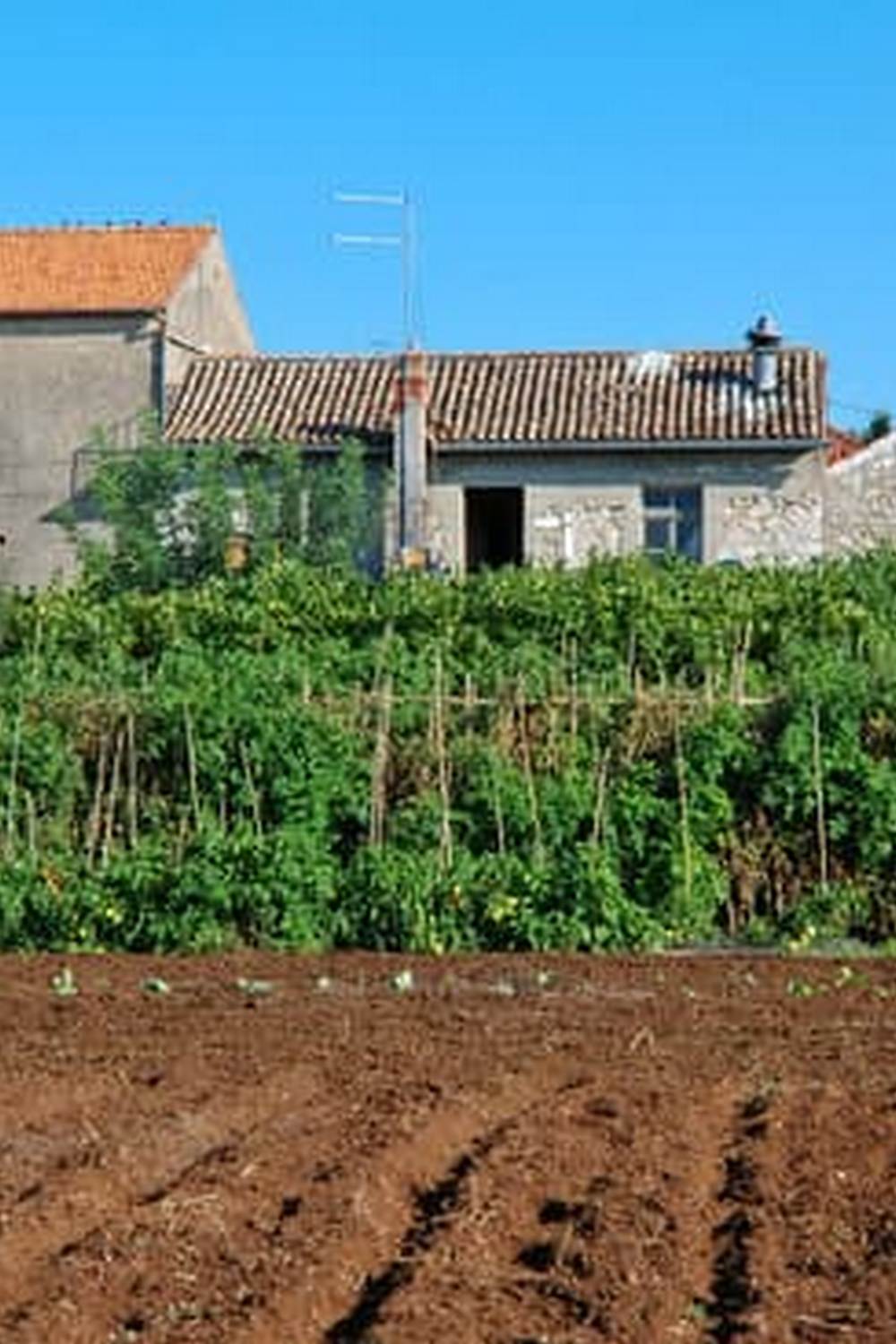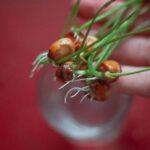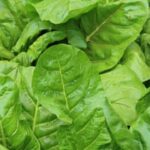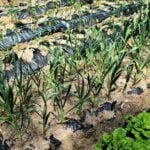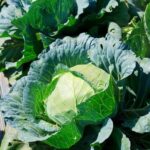When it comes to growing vegetables, the choice of gardening pots plays a crucial role in the success of your garden. Selecting the right gardening pots for vegetables can make a significant difference in the growth and yield of your plants. From size to material to drainage, there are several factors to consider when deciding on the perfect pots for your vegetable garden.
One key factor to keep in mind when choosing gardening pots for vegetables is the size. Different vegetables have varying root systems, so it’s vital to select pots that offer enough space for proper root development. Additionally, considering the material of the pots is important as it can impact water retention and temperature control for your plants. Proper drainage holes are also essential to prevent waterlogging and root rot.
Aside from practical considerations, using gardening pots for vegetables offers numerous benefits. Not only do they provide flexibility in terms of placement and mobility, but they also allow for better soil quality and pest control compared to traditional garden beds. With the right selection of gardening pots, you can create a thriving vegetable garden even in limited spaces such as balconies or patios.
Benefits of Using Gardening Pots for Vegetables
Improved Soil Drainage and Aeration
Gardening pots for vegetables offer the benefit of improved soil drainage and aeration. Unlike traditional garden beds, pots provide better control over moisture levels, preventing waterlogging which can lead to root rot. The porous nature of potting mix allows for better oxygenation of the roots, promoting healthier growth and reducing the risk of fungal diseases. This is especially beneficial for vegetables that are sensitive to overwatering, such as tomatoes and peppers.
Accessibility and Mobility
Another advantage of using gardening pots for vegetables is the accessibility and mobility they offer. Potted plants can be placed on decks, patios, or balconies, allowing urban gardeners with limited space to grow their own produce.
For individuals with physical limitations, such as back pain or mobility issues, gardening in pots eliminates the need for bending or kneeling down to tend to plants. Additionally, pots can be easily moved around to optimize sunlight exposure or protect plants from harsh weather conditions.
Versatility and Experimentation
Using gardening pots for vegetables provides gardeners with greater versatility and the opportunity for experimentation. Different sizes and shapes of pots allow for growing a variety of vegetables according to space constraints or aesthetic preferences. Gardeners can also test out new vegetable varieties without committing a large area in their garden beds. This versatility enables novices to learn about plant care and adapt their techniques accordingly, leading to a more successful gardening experience overall.
Types of Gardening Pots Suitable for Vegetables
When it comes to choosing gardening pots for vegetables, selecting the right type of container is crucial to ensure the health and growth of your plants. There are various factors to consider when deciding on the type of gardening pots that will be suitable for your vegetable garden.
One important factor to keep in mind is the size of the pot, as different vegetables require different depths and widths to grow properly. Additionally, drainage is key for successful vegetable cultivation, so opting for pots with drainage holes at the bottom is essential.
To make it easier for you to choose the right gardening pots for vegetables, here are some types of containers that are suitable for growing a variety of crops:
- Plastic Pots: Lightweight and affordable, plastic pots are a popular choice for vegetable gardening. They come in various sizes and shapes, making them versatile for different types of plants.
- Terracotta Pots: Known for their classic look and excellent breathability, terracotta pots are great for growing vegetables that prefer well-drained soil.
- Fabric Pots: These soft-sided containers promote air pruning of roots, preventing root-bound plants and promoting healthier growth. Fabric pots are also easy to store and transport.
Choosing the right type of gardening pot for your vegetables can significantly impact the success of your garden. By considering factors such as size, material, and drainage capabilities, you can create an optimal environment for your vegetable plants to thrive. Experimenting with different types of gardening pots can also help you discover which containers work best for specific vegetables in your garden.
Best Vegetables to Grow in Gardening Pots
When it comes to growing vegetables in gardening pots, certain vegetables are more suitable for this method due to their size, root structure, and growth habits. One of the best vegetables to grow in gardening pots is cherry tomatoes.
These small plants thrive in containers and produce an abundance of sweet cherry tomatoes throughout the season. Herbs like basil, parsley, and chives are also great choices for gardening pots, as they don’t require a lot of space and can be easily harvested as needed.
Another vegetable that does well in gardening pots is peppers. Whether you prefer sweet bell peppers or spicy jalapenos, these plants do not mind being confined to a container. Just make sure to provide them with adequate sunlight and water for optimal growth.
For those looking to add some greens to their garden, leafy vegetables like lettuce, spinach, and kale are perfect for gardening pots. These vegetables can be continuously harvested by picking individual leaves, making them a convenient choice for container gardening.
If you’re interested in growing root vegetables in gardening pots, carrots and radishes are great options. Choose deeper containers to accommodate the long taproots of carrots and the round bulbs of radishes. Be sure to choose varieties that are specifically suited for container growing to ensure a successful harvest. By selecting the right vegetables for your gardening pots and providing them with the proper care, you can enjoy a bountiful harvest right from your own patio or balcony.
How to Properly Prepare Gardening Pots for Vegetable Planting
When it comes to growing vegetables in gardening pots, proper preparation is essential for the success of your plants. Preparing your gardening pots correctly can provide a healthy environment for your vegetables to thrive and produce an abundant harvest. Here are some important steps to properly prepare your gardening pots for vegetable planting:
Choosing the Right Potting Mix
One of the first steps in preparing your gardening pots for vegetable planting is selecting the right potting mix. Ensure that you choose a high-quality, well-draining potting mix that is specifically formulated for container gardening. Avoid using garden soil directly from your yard, as it may contain pests, diseases, and weed seeds that could harm your vegetables.
Properly Cleaning and Disinfecting Pots
Before planting any vegetables in your gardening pots, make sure to thoroughly clean and disinfect the pots. Wash the pots with soap and water to remove any dirt or residues from previous plantings. For an extra layer of protection against pests and diseases, consider soaking the pots in a solution of one part bleach to nine parts water before rinsing them thoroughly.
Adding Drainage Holes
Good drainage is crucial for healthy vegetable plants grown in containers. Check that your gardening pots have sufficient drainage holes at the bottom to prevent waterlogged soil, which can lead to root rot. If your pots do not have adequate drainage holes, drill additional holes carefully using a drill with a masonry bit to avoid damaging the pot.
By following these steps in preparing gardening pots for vegetable planting, you can create a suitable environment for your vegetables to grow successfully. Proper preparation will not only benefit the health of your plants but also contribute to higher yields and more enjoyable gardening experience. Remember that taking the time to prepare your gardening pots properly will pay off in healthier plants and bountiful harvests of fresh veggies throughout the growing season.
Tips for Maintaining Vegetables in Gardening Pots
When it comes to maintaining vegetables in gardening pots, there are a few key tips to keep in mind to ensure the health and productivity of your plants. First and foremost, proper watering is essential. Vegetables grown in pots can dry out more quickly than those in the ground, so it’s important to regularly check the moisture levels of the soil and water as needed. Overwatering can lead to root rot, so finding the right balance is crucial.
Another important aspect of maintaining vegetables in gardening pots is fertilization. Since potted plants have limited access to nutrients compared to those planted directly in the ground, it’s important to regularly feed your vegetables with a balanced fertilizer. This will help ensure that they have all the essential nutrients they need to thrive and produce a bountiful harvest.
In addition to watering and fertilizing, proper pruning and pest control are also key components of maintaining vegetables in gardening pots. Regularly inspect your plants for any signs of pests or disease, and take prompt action if necessary.
Pruning can help promote healthy growth and improve air circulation around your plants, reducing the risk of issues like mold or mildew. By staying on top of these maintenance tasks, you can help ensure that your vegetables grow strong and healthy in their pots.
| Tip | Description |
|---|---|
| Proper Watering | Regularly check moisture levels and water as needed. |
| Fertilization | Use a balanced fertilizer regularly due to limited nutrient access. |
| Pruning and Pest Control | Regular inspection for pests or disease; prune for healthy growth. |
Common Mistakes to Avoid When Using Gardening Pots for Vegetables
When it comes to using gardening pots for vegetables, there are several common mistakes that many novice gardeners make. By being aware of these errors, you can ensure a successful and productive gardening experience.
One of the most common mistakes to avoid when using gardening pots for vegetables is choosing the wrong size container. It’s essential to select a pot that is large enough to accommodate the root system of the vegetable plant you intend to grow. If the pot is too small, it can restrict growth and lead to stunted or unhealthy plants. Consider the mature size of the vegetable plant before selecting a container.
Another mistake to steer clear of is improper drainage in gardening pots for vegetables. Proper drainage is crucial for preventing waterlogged soil, which can cause root rot and other issues. Make sure your pots have sufficient drainage holes at the bottom to allow excess water to escape. You can also consider adding a layer of stones or gravel at the bottom of the pot before adding soil to improve drainage.
Lastly, failing to provide adequate sunlight is a common mistake when using gardening pots for vegetables. Most vegetable plants require at least 6-8 hours of sunlight daily to thrive. Ensure that your pots are placed in an area that receives ample sunlight throughout the day. If natural light is limited, consider supplementing with grow lights to ensure your vegetable plants receive the light they need to grow and produce bountiful harvests.
- Choose the right size container
- Ensure proper drainage
- Provide adequate sunlight
Creative DIY Ideas for Decorating Gardening Pots for Vegetables
When it comes to decorating gardening pots for vegetables, there are plenty of creative DIY ideas that can make your garden not only productive but also visually appealing. One fun and easy way to add some flair to your gardening pots is by painting them in vibrant colors or patterns.
You can use acrylic paints or spray paint to customize your pots according to your taste and style. Consider using stencils or painters tape to create geometric designs or intricate patterns for a unique look.
Another great DIY idea for decorating gardening pots for vegetables is to add embellishments such as mosaic tiles, seashells, beads, or even small mirrors. These decorations can be glued onto the surface of the pots to create a beautiful and eye-catching effect. You can mix and match different materials to create a personalized design that reflects your personality and creativity. Just make sure to use waterproof glue if you plan on displaying the decorated pots outdoors.
If you’re feeling particularly crafty, you can also try decoupaging your gardening pots with paper napkins, fabric scraps, or decorative wrapping paper. This technique involves applying a thin layer of decoupage glue onto the pot and then carefully placing the chosen material on top before sealing it with another layer of glue.
The result is a charming and one-of-a-kind design that will surely stand out in your garden. Get creative with different colors and textures to achieve a stunning visual impact.
| DIY Idea | Description |
|---|---|
| Painting | Use acrylic paints or spray paint for vibrant colors. |
| Embellishments | Add mosaic tiles, seashells, beads for a unique look. |
| Decoupage | Decorate with paper napkins or fabric scraps using decoupage technique. |
Conclusion
In conclusion, the trend of growing vegetables in gardening pots is undoubtedly on the rise and appears to be gaining popularity among both experienced gardeners and novices alike. The convenience, flexibility, and versatility that gardening pots offer make them an excellent option for cultivating a variety of vegetables in limited spaces such as balconies, patios, or even indoors.
As more people turn to urban gardening and seek sustainable ways to grow their own produce, the use of gardening pots for vegetables is expected to continue flourishing in the future.
Additionally, advancements in materials and designs have led to an array of gardening pots specifically tailored for growing vegetables. From self-watering containers to fabric bags with excellent drainage properties, gardeners now have numerous options to choose from based on their specific needs and preferences. This diversification not only enhances the aesthetic appeal of vegetable gardening but also promotes successful plant growth by providing optimal conditions for root development and water retention.
Moreover, as individuals become more conscious of their environmental footprint and seek eco-friendly alternatives, using gardening pots for vegetables aligns with sustainability practices. By utilizing recycled materials or choosing biodegradable options, gardeners can contribute positively to reducing waste while simultaneously enjoying a bountiful harvest of fresh, homegrown produce. In essence, the future of growing vegetables in gardening pots is bright, promising a greener and more accessible approach to urban agriculture for generations to come.
Frequently Asked Questions
What Kind of Pots Are Best for Growing Vegetables?
The best pots for growing vegetables are typically large containers made of durable materials like plastic, ceramic, or terracotta. These materials allow for proper drainage and aeration, which is essential for healthy root growth. Make sure the pots are at least 12-18 inches deep to accommodate vegetable roots.
What Is the Best Container to Plant Vegetables In?
When it comes to choosing the best container to plant vegetables in, consider options like grow bags, wooden crates, or raised beds. These containers provide ample space for roots to grow, good drainage, and enough room for proper soil volume. Choose a container that suits the specific needs of the vegetable you’re planting.
How Deep Should Pots Be for Vegetables?
The depth of pots for growing vegetables depends on the type of vegetable you plan to grow. As a general rule of thumb, pots should be at least 12 inches deep for most vegetables to allow space for root development.
However, some plants may require deeper pots, so always check the specific requirements for each vegetable before planting. Good drainage is also crucial in preventing waterlogged soil and root rot in shallow pots.

If you’re looking to get into vegetable gardening, or are just looking for some tips on how to make your current garden better, then you’ve come to the right place! My name is Ethel and I have been gardening for years. In this blog, I’m going to share with you some of my best tips on how to create a successful vegetable garden.

